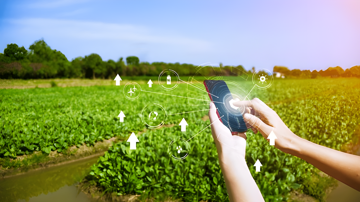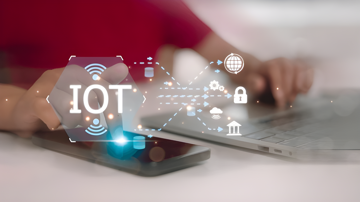Connecting Arduino to the Internet: Complete Tutorial
Real-Time Solar Panel Monitoring: Arduino & IoT Guide
Track solar panel performance in real time, analyze energy data, and optimize renewable systems using Arduino What is Arduino? A Comprehensive OverviewDive into the world of Arduino with our in-depth guide covering hardware, software, and community projects ideal for students, hobbyists, and educators., ESP modules, and IoT protocols.
What is Arduino? A Comprehensive OverviewDive into the world of Arduino with our in-depth guide covering hardware, software, and community projects ideal for students, hobbyists, and educators., ESP modules, and IoT protocols.
Introduction🔗
Solar energy systems require precise monitoring to maximize efficiency, detect faults, and predict output. This project combines microcontroller Understanding Arduino ComponentsExplore every Arduino board component and learn expert integration tips to boost your design and troubleshooting skills in our comprehensive guide. hardware (Arduino/ESP32), sensors, and IoT protocols to create a scalable solar monitoring system. You’ll learn to measure voltage, current, and environmental factors while transmitting data to cloud platforms for analysis-ideal for DIY enthusiasts, educators, and professionals prototyping sustainable tech.
Understanding Arduino ComponentsExplore every Arduino board component and learn expert integration tips to boost your design and troubleshooting skills in our comprehensive guide. hardware (Arduino/ESP32), sensors, and IoT protocols to create a scalable solar monitoring system. You’ll learn to measure voltage, current, and environmental factors while transmitting data to cloud platforms for analysis-ideal for DIY enthusiasts, educators, and professionals prototyping sustainable tech.
This guide merges hardware design, firmware development, IoT integration Soil Moisture Meter for Automated Plant CareDiscover advanced plant care automation with our step-by-step guide to building soil moisture sensors, smart irrigation systems, and IoT solutions., and data analysis into a cohesive workflow, with practical examples, mathematical theory, and optimization strategies for real-world deployment.
Soil Moisture Meter for Automated Plant CareDiscover advanced plant care automation with our step-by-step guide to building soil moisture sensors, smart irrigation systems, and IoT solutions., and data analysis into a cohesive workflow, with practical examples, mathematical theory, and optimization strategies for real-world deployment.
Table of Contents🔗
- Hardware Components & Circuit Design
 Your First Hands-On Arduino ProjectEmbark on your Arduino journey with our step-by-step guide. Learn to build a simple circuit, write your first code, and troubleshoot your project easily.
Your First Hands-On Arduino ProjectEmbark on your Arduino journey with our step-by-step guide. Learn to build a simple circuit, write your first code, and troubleshoot your project easily. - Sensor Calibration
 Interfacing and Calibrating Various SensorsDiscover essential techniques to interface and calibrate sensors with Arduino. Enhance measurement accuracy with practical examples and troubleshooting tips. & Measurement Techniques
Interfacing and Calibrating Various SensorsDiscover essential techniques to interface and calibrate sensors with Arduino. Enhance measurement accuracy with practical examples and troubleshooting tips. & Measurement Techniques - Firmware Development for Data Acquisition
- IoT Integration
 Soil Moisture Meter for Automated Plant CareDiscover advanced plant care automation with our step-by-step guide to building soil moisture sensors, smart irrigation systems, and IoT solutions. with MQTT
Soil Moisture Meter for Automated Plant CareDiscover advanced plant care automation with our step-by-step guide to building soil moisture sensors, smart irrigation systems, and IoT solutions. with MQTT - Data Visualization & Advanced Analysis
- System Optimization
 Soil Moisture Meter for Automated Plant CareDiscover advanced plant care automation with our step-by-step guide to building soil moisture sensors, smart irrigation systems, and IoT solutions. & Scalability
Soil Moisture Meter for Automated Plant CareDiscover advanced plant care automation with our step-by-step guide to building soil moisture sensors, smart irrigation systems, and IoT solutions. & Scalability - Conclusion
Hardware Components & Circuit Design🔗
Key Components
| Component | Purpose | Key Specs |
|---|---|---|
| Arduino Uno/Nano/ESP32 | Core controller | 5V/3.3V, Wi-Fi (ESP32) |
| INA219 Sensor | Current/Voltage Measurement | ±3.2A, 26V max |
| DHT22 Sensor | Ambient Temp/Humidity | -40°C–80°C, ±2% RH accuracy |
| BH1750 Light Sensor | Solar Irradiance | 0–65535 lux, I2C interface |
| ESP8266 Wi-Fi Module | IoT Connectivity (for Arduino) | 802.11 b/g/n, TCP/IP stack |
| Voltage Divider Circuit | Scale Down Panel Voltage | R1 = 30kΩ, R2 = 10kΩ |
| 16x2 LCD Display | Local Data Readout | HD44780 driver |
System Block Diagram
Wiring Diagram (Arduino + ESP8266)
Sensor Calibration & Measurement Techniques🔗
Voltage Divider Calibration
To safely measure solar panel voltage (e.g., 20V max) with a microcontroller Understanding Arduino ComponentsExplore every Arduino board component and learn expert integration tips to boost your design and troubleshooting skills in our comprehensive guide. (5V ADC limit):
Understanding Arduino ComponentsExplore every Arduino board component and learn expert integration tips to boost your design and troubleshooting skills in our comprehensive guide. (5V ADC limit):
For R₁ = 30kΩ and R₂ = 10kΩ:
Current Measurement with INA219
The INA219’s shunt resistor (0.1Ω) converts current to voltage:
Calibrate the sensor Introduction to Sensors for ArduinoLearn the fundamentals of Arduino sensors, including setup, calibration, and coding examples—perfect for building interactive, smart projects with precision. in firmware:
Introduction to Sensors for ArduinoLearn the fundamentals of Arduino sensors, including setup, calibration, and coding examples—perfect for building interactive, smart projects with precision. in firmware:
Adafruit_INA219 ina219;
ina219.begin();
ina219.setCalibration_32V_1A(); // Configure for 32V range, 1A max
Firmware Development for Data Acquisition🔗
Arduino Code (ESP8266 Example)
#include <Wire.h>
#include <Adafruit_INA219.h>
#include <BH1750.h>
#include <DHT.h>
#include <SoftwareSerial.h>
#define DHTPIN 2
#define DHTTYPE DHT22
Adafruit_INA219 ina219;
BH1750 lightMeter;
DHT dht(DHTPIN, DHTTYPE);
SoftwareSerial espSerial(10, 11); // RX, TX
void setup() {
Serial.begin(9600);
ina219.begin();
lightMeter.begin();
dht.begin();
espSerial.begin(115200);
}
void loop() {
float busVoltage = ina219.getBusVoltage_V();
float current_mA = ina219.getCurrent_mA();
float lux = lightMeter.readLightLevel();
float temp = dht.readTemperature();
float humidity = dht.readHumidity();
String payload = String(busVoltage, 2) + "," + String(current_mA, 2) + "," + String(lux) + "," + String(temp, 1) + "," + String(humidity, 1);
sendToCloud(payload);
delay(30000);
}
void sendToCloud(String data) {
espSerial.println("AT+CIPSEND=0," + String(data.length()));
delay(100);
espSerial.println(data);
}
ESP32 Code (Built-in Wi-Fi)
#include <WiFi.h>
#include <PubSubClient.h>
#include <Adafruit_INA219.h>
const char* ssid = "Your_SSID";
const char* password = "Your_Password";
const char* mqttServer = "broker.hivemq.com";
WiFiClient espClient;
PubSubClient client(espClient);
Adafruit_INA219 ina219;
void setup() {
Serial.begin(115200);
ina219.begin();
WiFi.begin(ssid, password);
client.setServer(mqttServer, 1883);
}
void loop() {
if (!client.connected()) reconnectMQTT();
float current_mA = ina219.getCurrent_mA();
float voltage = ina219.getBusVoltage_V();
String payload = "{\"voltage\":" + String(voltage, 2) + ",\"current\":" + String(current_mA, 2) + "}";
client.publish("solar/monitor", payload.c_str());
delay(5000);
}
void reconnectMQTT() {
while (!client.connect("ESP32Solar")) {
delay(5000);
}
}
IoT Integration with MQTT🔗
MQTT Protocol Setup
1. Broker Options:
- Public:
test.mosquitto.org,broker.hivemq.com - Private: Mosquitto on Raspberry Pi
2. Topics:
solar/voltagesolar/currentsolar/power
Security & Error Handling
- TLS Encryption: Use port 8883 for secure MQTT.
- Reconnection Logic:
void reconnect() {
while (!client.connected()) {
if (client.connect("ClientID", "username", "password")) {
client.subscribe("solar/commands");
}
}
}
Data Visualization & Advanced Analysis🔗
Power Calculation
Python Analysis Example
import pandas as pd
import matplotlib.pyplot as plt
data = pd.read_csv('solar_data.csv')
data['power'] = data['voltage'] * data['current'] / 1000 # Convert mA to A
plt.figure(figsize=(12, 6))
plt.plot(data['timestamp'], data['power'], label='Solar Output')
plt.title('Power Trends')
plt.xlabel('Time')
plt.ylabel('Watts')
plt.grid(True)
plt.show()
IoT Dashboards
- Grafana: Visualize time-series data from InfluxDB.
- Node-RED: Create real-time dashboards with MQTT integration
 Integrating Third-Party LibrariesLearn to integrate third-party libraries into Arduino projects with our guide. Discover tips on selection, installation, coding, and troubleshooting..
Integrating Third-Party LibrariesLearn to integrate third-party libraries into Arduino projects with our guide. Discover tips on selection, installation, coding, and troubleshooting..
System Optimization & Scalability🔗
Energy Efficiency Tactics
1. Deep Sleep Mode:
ESP.deepSleep(30e6); // Sleep for 30 seconds
analogReadAveraging(32); // Average 32 samples
Fault Detection Algorithm
void checkSensorStatus() {
if (isnan(temp)) {
client.publish("solar/errors", "DHT22_FAIL");
}
if (current_mA < 10) { // Abnormal low current
client.publish("solar/alerts", "PANEL_FAULT");
}
}
Scalable Architecture
Conclusion🔗
This integrated solar monitoring system leverages IoT to provide real-time insights into solar panel performance. By combining precise sensor measurements, robust firmware, and scalable cloud connectivity, users can optimize energy output, detect faults proactively, and contribute to sustainable energy practices. Whether using Arduino with ESP8266 or ESP32, the principles of voltage/current measurement, MQTT communication, and data analysis remain foundational. Future enhancements Your First Hands-On Arduino ProjectEmbark on your Arduino journey with our step-by-step guide. Learn to build a simple circuit, write your first code, and troubleshoot your project easily. could include machine learning for predictive maintenance or expanding the system to monitor entire solar farms.
Your First Hands-On Arduino ProjectEmbark on your Arduino journey with our step-by-step guide. Learn to build a simple circuit, write your first code, and troubleshoot your project easily. could include machine learning for predictive maintenance or expanding the system to monitor entire solar farms.
Author: Marcelo V. Souza - Engenheiro de Sistemas e Entusiasta em IoT e Desenvolvimento de Software, com foco em inovação tecnológica.
References🔗
- Adafruit Arduino Tutorials: learn.adafruit.com/category/arduino
- Arduino Forum: forum.arduino.cc
- Arduino IDE Official Website: arduino.cc
- Arduino Project Hub: create.arduino.cc/projecthub
- SparkFun Arduino Tutorials: learn.sparkfun.com/tutorials/tags/arduino


 9 months ago
9 months ago
 9 months ago
9 months ago
 8 months ago
8 months ago
 9 months ago
9 months ago
 9 months ago
9 months ago
 9 months ago
9 months ago
 9 months ago
9 months ago
 9 months ago
9 months ago
 9 months ago
9 months ago
 8 months ago
8 months ago
 8 months ago
8 months ago
 8 months ago
8 months ago
 7 months ago
7 months ago
 7 months ago
7 months ago
 7 months ago
7 months ago
 8 months ago
8 months ago
 8 months ago
8 months ago
 8 months ago
8 months ago
 8 months ago
8 months ago
 8 months ago
8 months ago
 8 months ago
8 months ago
 8 months ago
8 months ago
 7 months ago
7 months ago
 9 months ago
9 months ago
 9 months ago
9 months ago
 9 months ago
9 months ago